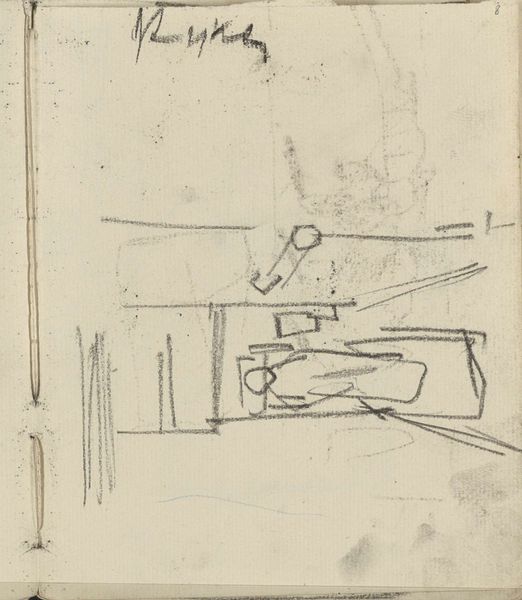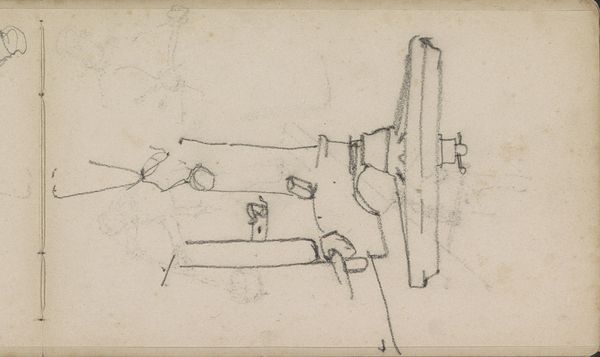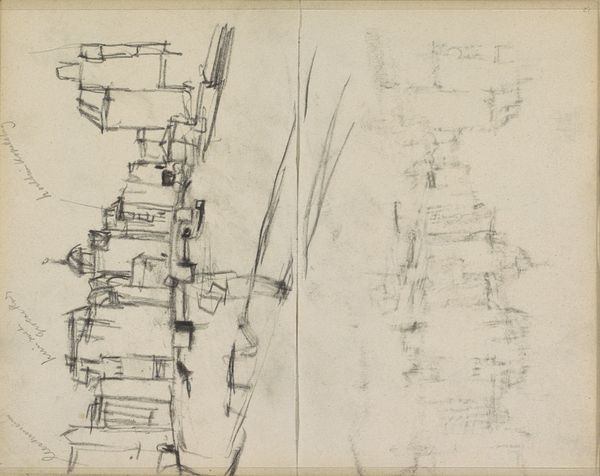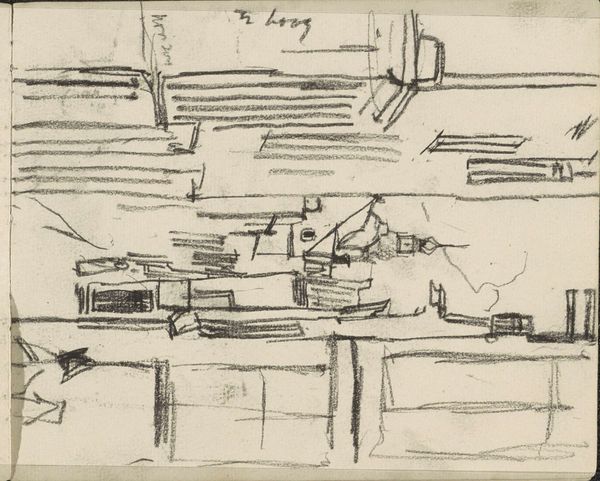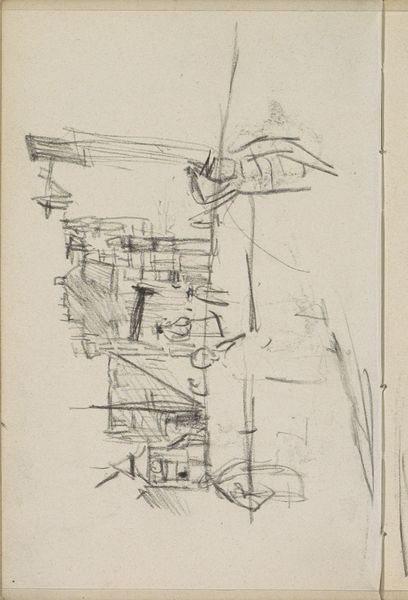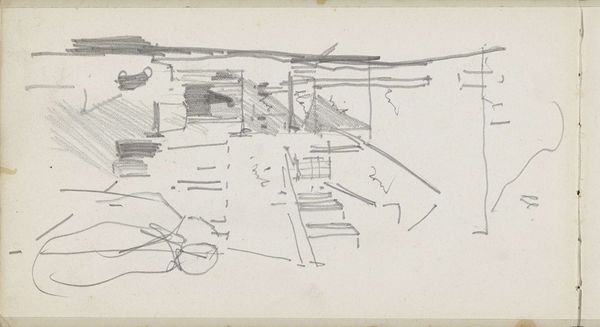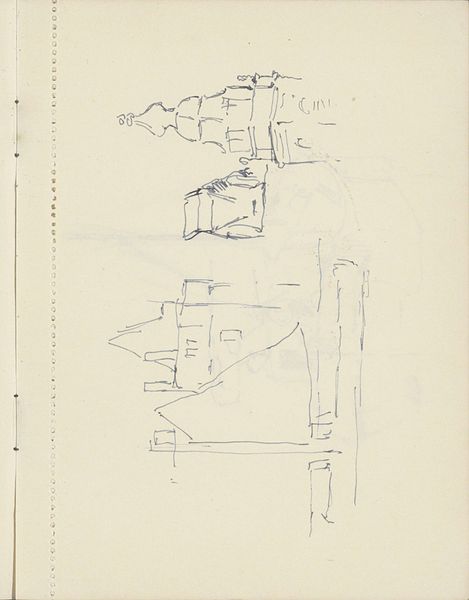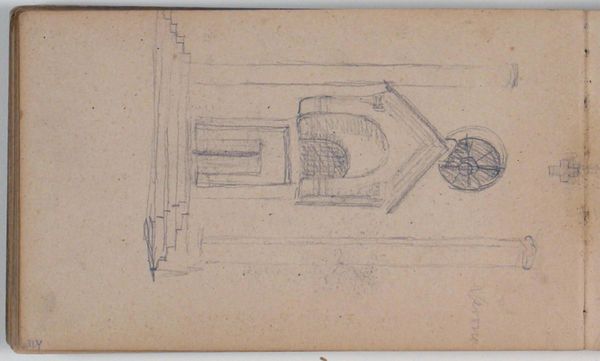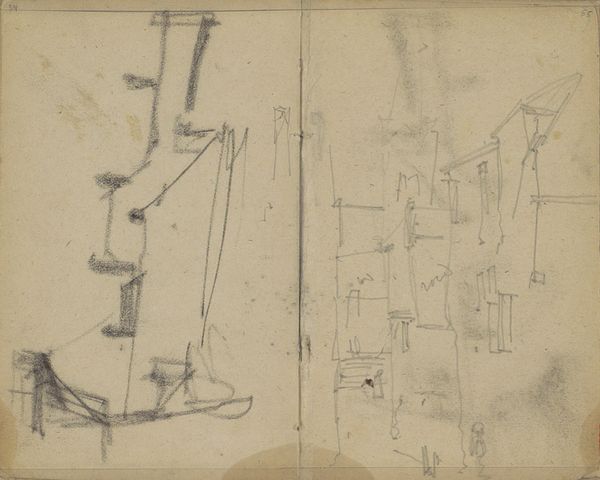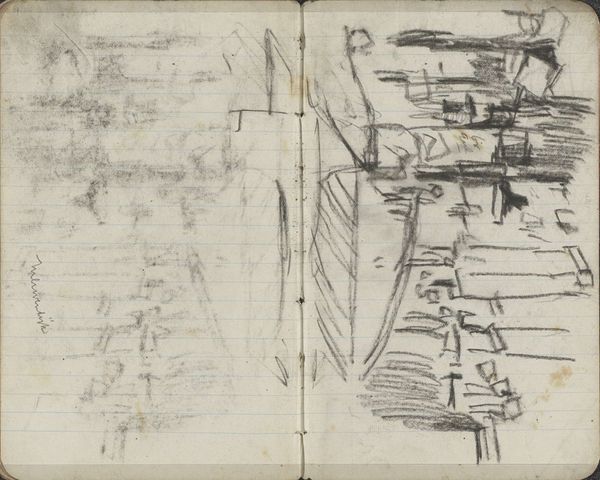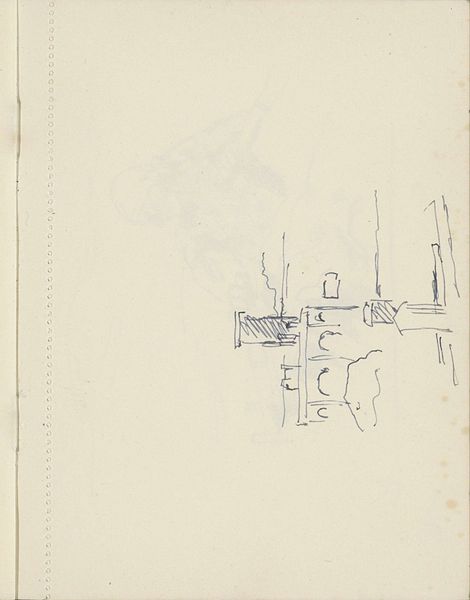
Copyright: Rijks Museum: Open Domain
Curator: Willem Witsen's "Huizen, mogelijk aan een gracht in Amsterdam," created circa 1915-1920, presents us with an intimate look into the artist's process through what appears to be a page torn from his sketchbook. Editor: Wow, it feels like catching a fleeting thought. The sketchy lines give it a real sense of immediacy, like he was trying to capture the essence of the canal houses before it vanished. Curator: Indeed. Witsen, embedded in Amsterdam's artistic circles, was particularly attuned to the city's sociopolitical dynamics. The choice of subject –canal houses– can be interpreted through the lens of urban development and class. The architecture, often symbols of bourgeois prosperity, juxtaposed against the working-class realities along the canals… Editor: Makes you wonder what stories these walls could tell, right? There's a quiet drama in the simplicity of the drawing—a little chaotic but definitely intriguing. Is it just me, or is there a sort of wistful mood about it? Maybe because it is a simple, grayscale sketch on what seems like aged paper. Curator: I agree about the mood, and that aged paper speaks volumes about its own history, almost mirroring the enduring presence of the canals. It reminds us of the narratives layered within the urban landscape itself. Editor: It's almost like you can smell the dampness of the canal and hear the echo of bicycle bells. Witsen has stripped away the frills and just given us the bones of the scene. Very cool. Curator: And the quick strokes perhaps capture the fast-changing dynamics of early 20th-century Amsterdam. The drawing becomes more than just a pretty cityscape; it is a documentation of shifting societal forces and realities. Editor: Makes you think about all the layers of history crammed into a single block of houses. Looking at this has kind of reframed my perspective of similar places I have seen in my city. Curator: Absolutely, by engaging with art like this, we can re-examine the built environment around us, understanding how history and society have shaped the spaces we occupy today. Editor: I'm looking forward to noticing all the tiny human details in the architecture on my street. Thanks, Witsen, for the inspiration!
Comments
No comments
Be the first to comment and join the conversation on the ultimate creative platform.
